"You are never too old to luge" - Interview with Anders Söderberg
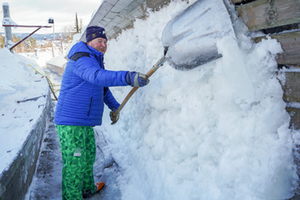
Hammarstrand (FIL/02.08.2023) Swedish luge veteran Anders Söderberg can look back on a long career on the sled, with numerous national and international medals, participations in World Championships and in no less than three Olympic Games.
Today, Anders Söderberg is focused on introducing a new generation to the sport of luge. In this interview he talks about his career, his love for the sport and why young people should try luge.
Luge is certainly not the most popular sport in Sweden. How did you get into it?
Anders Söderberg: "I grew up in Saltsjöbaden, where Sweden's first luge track was built. Like most kids, I tried different sports, such as skiing, ski jumping and field hockey. With a group of friends from my childhood, including Johan Ahlberg, Johan Westerberg and Stellan Blomén, we tried sledding at home. So in 1978 I joined the sledding club in Saltsjöbaden and my first sledding trip was to Hammarstrand in Ostjämtland in 1980. In Hammarstrand there was Sweden's only internationally recognized toboggan run. Since then, "Hammarn" has been something like a second home to me."
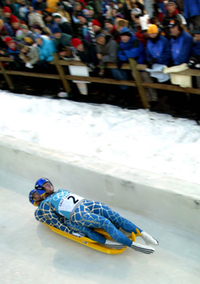
When did you discover that luge was something for you?
Anders Söderberg: "We were at a training camp in Winterberg, I think it was 1984, and at some point I realized that I wanted to focus on luge. And when I started to take it seriously, I realized that I had both the knowledge and the prerequisites for this sport. From then on, I trained intensively on all German tracks."
You competed at the highest international level. When did you make your breakthrough?
Anders Söderberg: "My first big championship experience was the Junior World Championships in Olang, Italy. I don't remember my placing, but it was good enough to keep going. I raced at my first World Championship in Calgary, Canada, in 1990, and my first Olympic appearance was in Lillehammer in 1994. That was followed by the Olympics in Nagano in 1998 and Salt Lake City in 2002. My best international result was at the 1990 Junior World Championships in Hammarstrand, when I finished second."
You competed in both singles and doubles. Which was more fun?
Anders Söderberg: "Luge is fun in every form. But if I had to choose, it would probably be the doubles. It's technically quite difficult, it's faster and it's more fun when there are two of you. You have someone to share the experience with. I mostly raced doubles with Bengt Walden, which was a lot of fun because we harmonized well and had a lot of fun together."
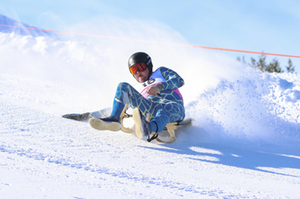
In old result lists it often says that you raced for Bydalens Kälk- und Rodelklubb. How did that come about?
Anders Söderberg: "I moved to Bydalen in Jämtland-Oviksbergen before the 1994 Olympic Games in Lillehammer. There I participated in various activities. Among other things, we did luge and even built a natural luge track. We held the Swedish championships on this track in the mid-90s. Since we lugged so much, it was natural for me that we also founded our own local luge club. Unfortunately, that club no longer exists."
Instead, you are now chairman of another luge club. How did Skärgårdens Rodel- und Kälkklubbs come to be founded?
Anders Söderberg: "In the mid-2010s, the activities in Saltsjöbadens Rodelklubb had more or less come to a standstill. But we were a group of enthusiasts who were "too stupid" to give up, as I said, sledding is just too much fun. So together with Bibi Walden, Hasse Kohala and Ann Kohala, I took the initiative and founded Skärgårdens Rodel- und Kälkklubb. I have been chairman since 2018 and we have worked hard to bring Sweden back to the top of the sport of luge. Today we have international senior and junior lugers, and we also have a local junior team.
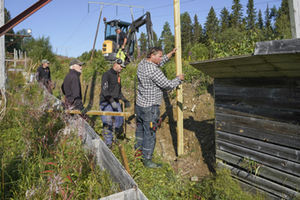
The federation's home track is in Lillehammer, Norway, but we also have two starting tracks. One is located on Ljusterö and the other is mobile. At the launch sites we hold the Skärgårdsrycket competitions every year. I think these events are very important because they promote cohesion during the long snow-free period.
Although you have ended your luge career, are you still closely connected to the sport?
Anders Söderberg: "Yes, as I said, you can't just stop. My career really ended at the 2004 World Championships in Nagano when I broke my wrist and still continued to race. But I felt it was time to draw a line and hang up the helmet. So I decided to change careers and became team manager of the Swedish junior team. At the same time, I had many other responsibilities as a technical delegate, competition director and general official. I also carried out many projects. I built the track in Saltsjöbaden countless times. For the 2011 Swedish Championships in Östersund, we built a luge, bobsleigh and skeleton track using a new technique. The curves were built entirely from piles of snow that we cut out of the compact snow with a huge cutter on an excavator. In a sport as small as luge, you like to be an all-rounder. A bit like a mascot."
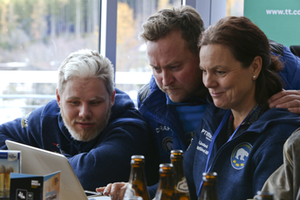
Now at an advanced age, have you found your way back to Hammarstrand?
Anders Söderberg: "It's not that surprising. It has been like a second home to me since I was ten years old. I have a strong connection to the place and the people there. When it was time to revive the toboggan run, which had been lying dormant for almost 20 years, I was thrilled. The reason for the revival was that we couldn't train abroad and compete in luge, bobsleigh and skeleton because of the Covid 19 pandemic. And in Hammarstrand, there was a largely functional facility just waiting to be used again by luge athletes. The then chairman of the Hammarstrand Luge Club, Bosse Näsström, had done a fantastic job of keeping the facility in good shape. It therefore did not take much effort to get the track up and running again. Thanks to the great interest of the luge community, former lugers, coaches and other interested people, it was possible to put the track back into operation. Through a grant project, we got money to renovate it and make it ready for the future. I think that the toboggan run in Hammarstrand has good conditions. There is cold and snow here and the knowledge is there. But in order to function in the future, the track must be built of concrete and artificially iced. Today it is still being built in the same way as it was in the early 1960s, and that takes too long and costs the people who build it too much energy.
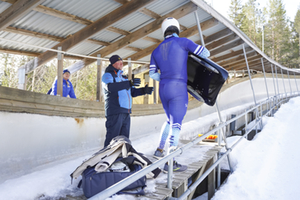
Thanks to my commitment to the railroad, I also bought a cottage nearby. My family and I feel very comfortable there. To be honest, incredibly comfortable. The place has a lot to offer: a toboggan and bobsled run on one side, an alpine slope on the other, hiking trails at the top and in the valley. And the scenery in Ragundadalen is just incredibly beautiful."
How long do you think you will maintain your passion for the sport?
Anders Söderberg: "There is something special about these two skids, the two bridges, the pod and the seat. The thrill of controlling this unusual construction like a sled and steering according to the G-forces and not just what you see. Sledding is simply love. And if you are not thrilled when you see, especially in the eyes of children and young people, how they make it to the bottom despite bruises and effort, then I don't know what else to be happy about.
Anyway, that's why I'm still burning for the sport of luge and why I think others should join in, too."
photos: Roger Strandberg and Niklas Larsson








